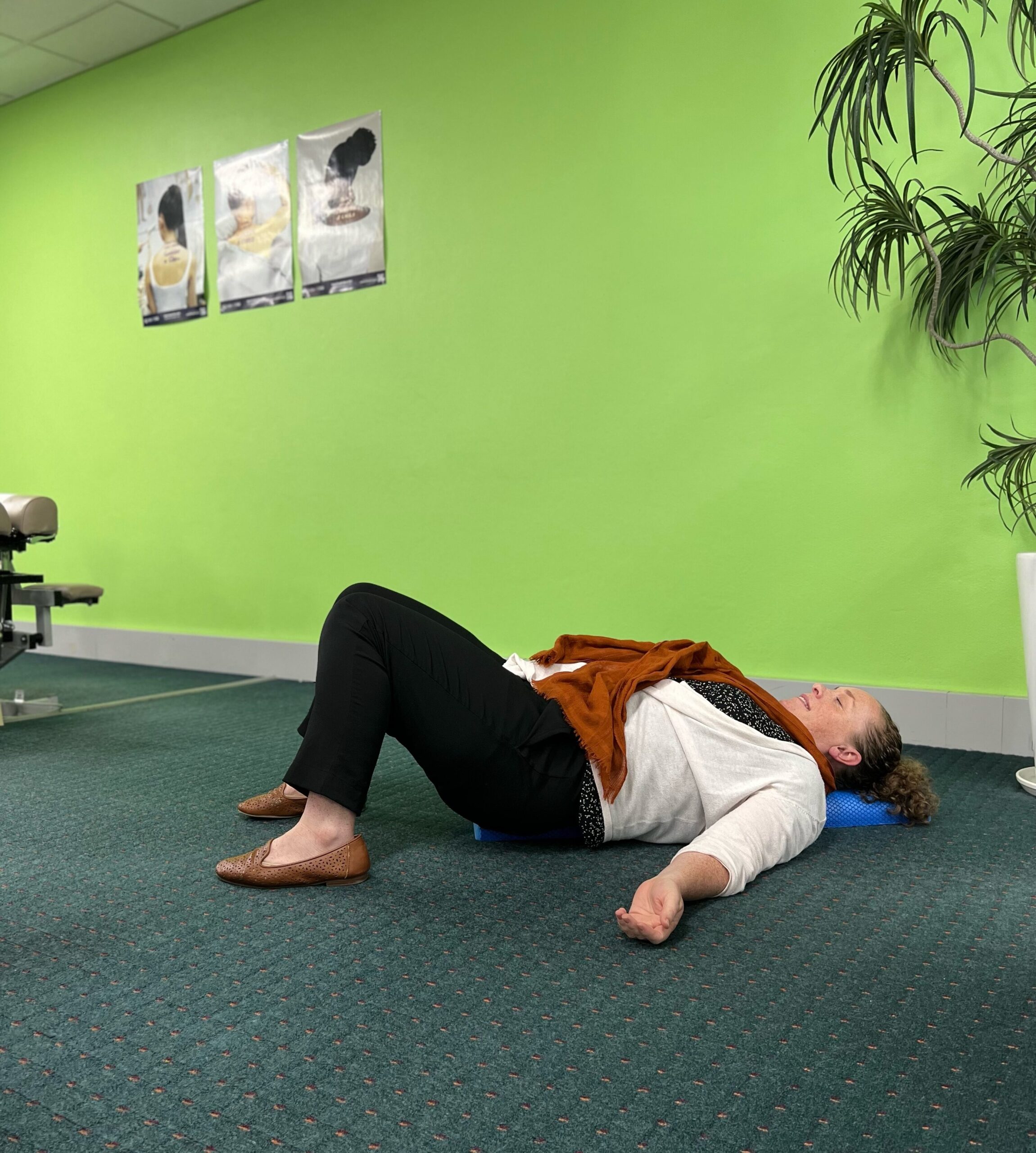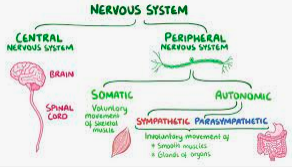A posture pole is essentially a long foam roller that’s been cut in half so it can lie flat and balanced on the ground. You then lie down so the posture pole is along the length of your spine, all the way up to the back of your head. Basically you just have to lie down, it’s as simple as that!

But like anything if we understand why we are doing something, we are more likely to follow through with it and be more consistent if we are clear about the purpose and the end goal of our actions.
So why has your Chiropractor told you to carve some time out of your schedule to lie down?
Our Nervous System is made up of 3 major parts; The Central Nervous System, Peripheral and Autonomic Nervous Systems. The Central Nervous System is comprised of our brain and spinal cord. The Peripheral Nervous System is all the nerves that come off the brain and spinal cord and go to all the tissues and organs of your body.
While the Central Nervous System is something we have some conscious control over, like when and how to move etc. The autonomic nervous system is in charge of all the things you don’t have to think about – like hormones, digesting your food, your heart beating, lungs breathing, sweating to cool down and many other crucial functions.
Your Autonomic nervous system is broken into two parts: The sympathetic and parasympathetic nervous systems . The parasympathetic side is more active when you are calm and relaxed or in ‘rest and digest’ mode, while the sympathetic side is the counter. The sympathetic part is the side that reacts in ‘fight or flight’ situations. The autonomic nervous system operates like a see saw as one side fires up the other side comes down. The more fired up one side becomes, the more suppressed the other becomes.

Sympathetic Dominance occurs when you stay in fight or flight mode for too long. It suppresses the digestive, reproductive and immune systems.
While the Autonomic Nervous System is largely automatic, we can actually have an impact on it. We can restore it to parasympathetic mode.
Sympathetic Dominance occurs when a certain area of the brain (mesencephalon) is wound – up. This can be influenced by lifestyle, stress, posture and other things.
Basically there are 5 important neurons in this mesencephalon which are important when it comes to Sympathetic dominance:
1 Mesencephalic reticular formation – responsible for activating fight or flight mode
2 The red nucleus – controls skeletal muscle tone
3 The superior colliculus – receives light input
4 The inferior colliculus – receives sound input
5 The Edinger Westphal Nucleus – which constricts the pupil when someone has been in sympathetic dominance mode for too long.
Clam all of these down and you are on your way to balancing the parasympathetic and sympathetic.
Today our focus is on explaining the workings of the posture pole and this takes us on a more in-depth look at number 2, the red nucleus.
The red nucleus is the primary – order motor nucleus for skeletal muscle tone. There are two red nuclei – one for the left and one for the right.
The way our muscles are distributed on our body is different on the top and bottom half of our body if we draw a line horizontally across the body at the level of the shoulder blades (about the midpoint of the spinal column)
Most of the movements above this line, the muscles mass and range of movement is oriented towards the front of the body and in comparison the muscles below this line are stronger at the back with our glutes, hamstrings and calf muscles having greater nerve supply.
When there is sympathetic activation, the calves, hamstrings, buttocks and glutes all tighten up, ready to run and shoulders become rounded, ready to fight.
If someone is in a chronic state of sympathetic wind up, they will have shoulders like concrete and may experience tight, aching calf muscles. This is all the action of the red nuclei.
More concerning is that a postural feedback loop can develop where the very posture that is created by the sympathetic wind up of the system actually triggers the red nuclei and the other neurons in the previously mentioned mesencephalon to increase the rate of firing, leaving individuals stuck in this chronic state for far too long.
If we correct the posture, we can have a significant impact on calming the red nucleus.
Enter our friend the posture pole. Using one of these simple devices for up to 15 mins at least once a day can help you passively change your posture. This helps open the chest area to reduced wind- up and align the head in neutral position.
Over time using the posture pole can help to break the postural feedback loop and subsequently calming down in the firing of the red nuclei in the brain, giving you a better chance of combating all the postural stress our bodies hold onto and restoring balance to your autonomic nervous system.
References:
Todd, D. W. (2015). SD Protocol Achieve greater health by learning to balance your physical, chemical and emotional wellbeing. Sale, Victoria, Australia: Todd Wellness Group.



